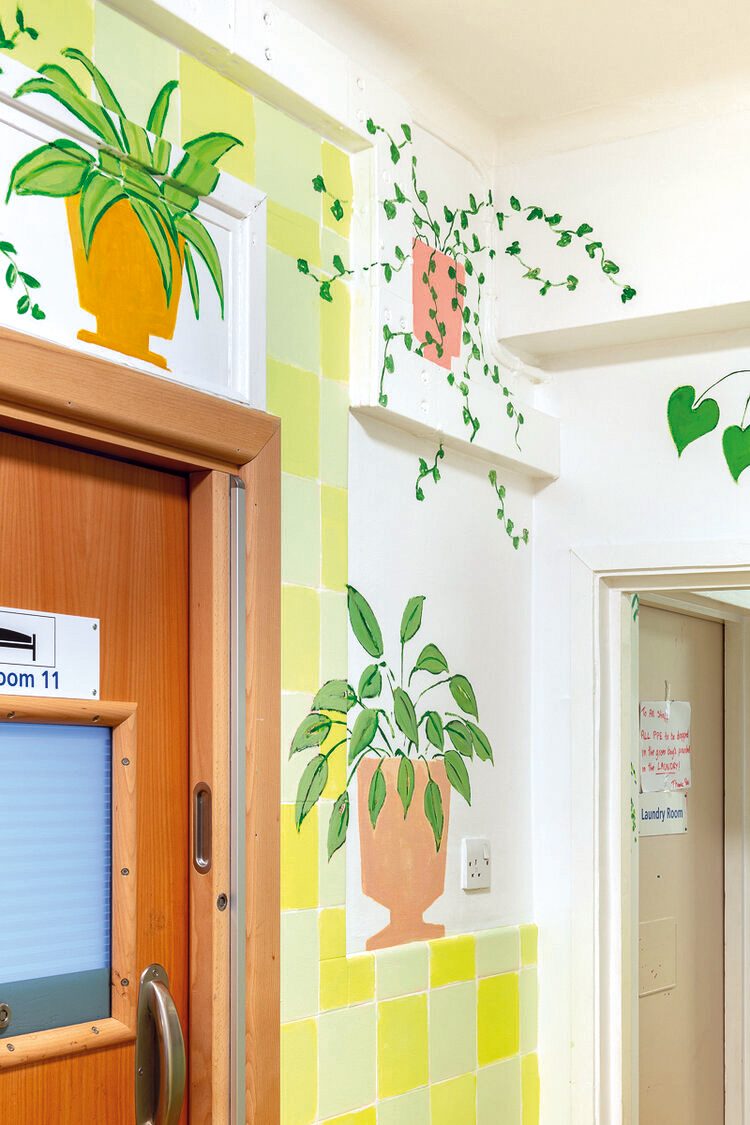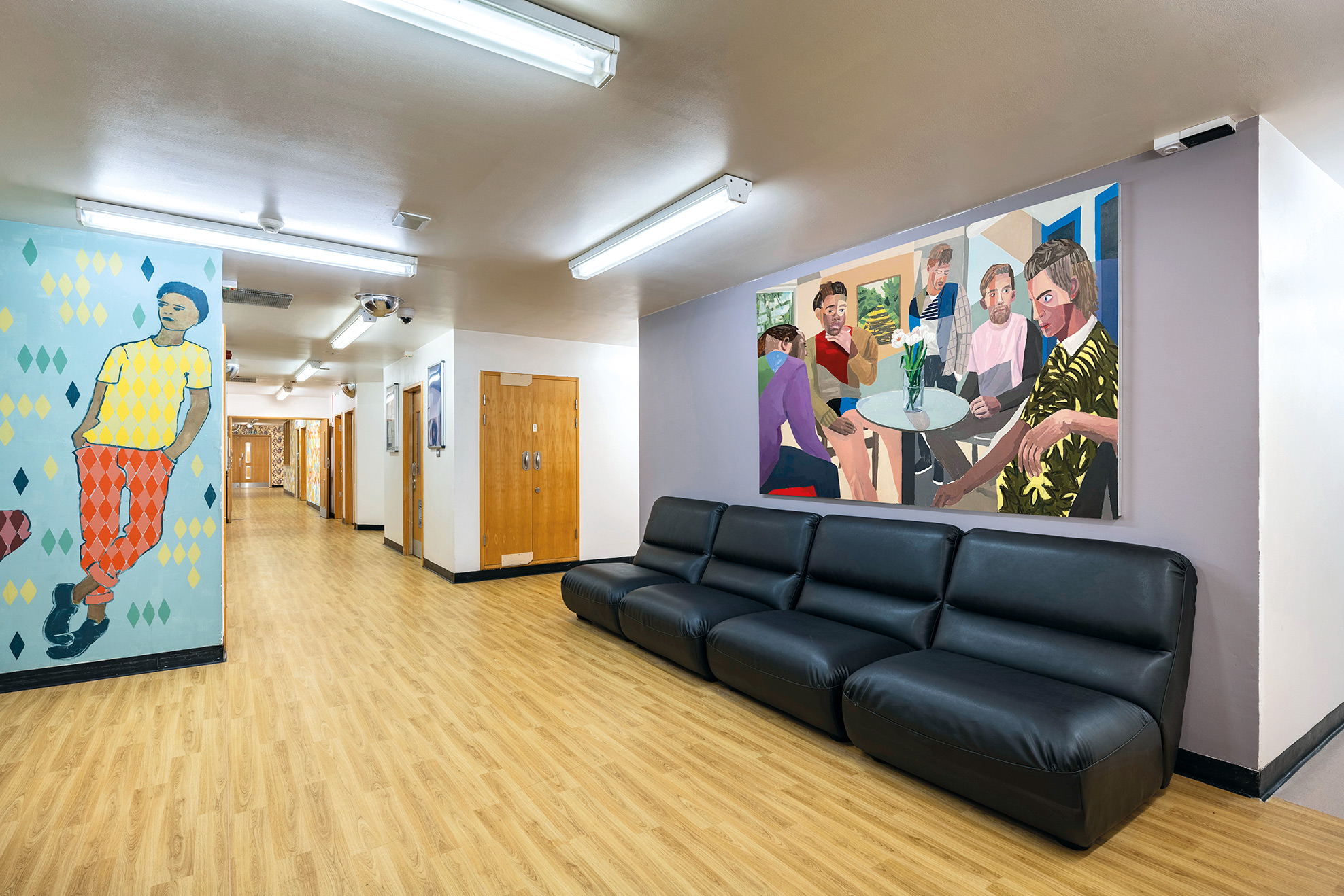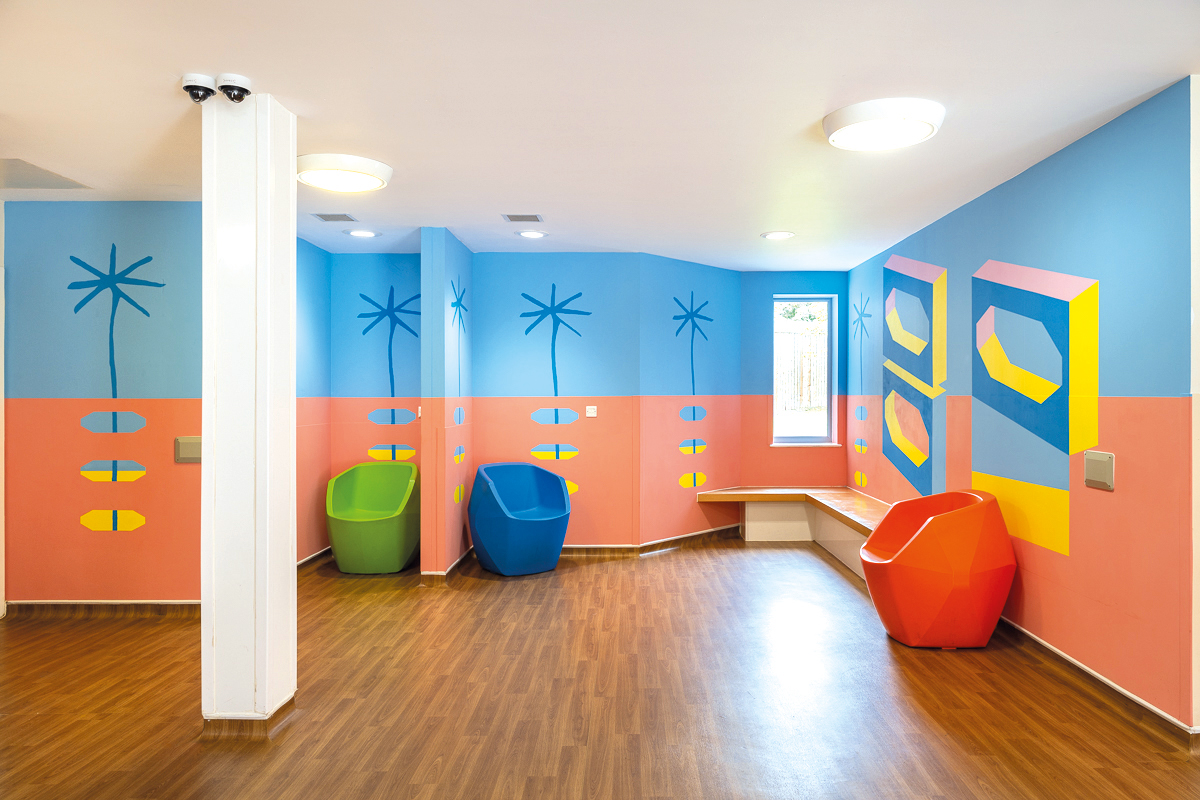
There has been a renewed interest in arts in health programmes within mental health and dementia settings as a result of the COVID-19 pandemic
The COVID-19 pandemic has put mental health at the top of the agenda and, increasingly, the role of the arts is being acknowledged as having a significant positive impact on our health and wellbeing.
From the pictures of rainbows that adorned windows at the height of the national lockdown, to photographic exhibitions and new art installations in hospitals and social care facilities; investment in arts in health projects is gathering momentum.
And it is in mental health and dementia settings where these schemes can have the biggest impact as many patients and residents remain in these environments for long periods of time, sometimes many years.
Back in 2017 the All-Party Parliamentary Group on Arts, Health and Wellbeing produced a report entitled Creative Health: The Arts for Health and Wellbeing.
In his foreword, group co-chairman, the Rt Hon Lord Howarth of Newport, said: “The time has come to recognise the powerful contribution the arts can make to our health and wellbeing.
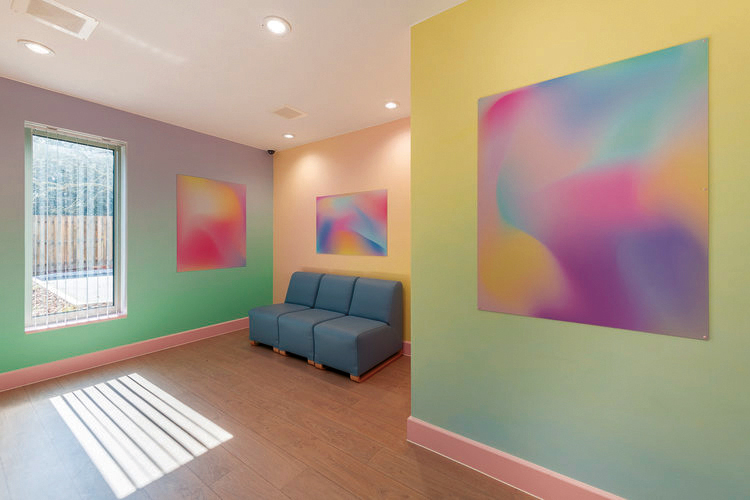
MAKING A CONTRIBUTION
“We are calling for an informed and open-minded willingness to accept that the arts can make a significant contribution to addressing a number of the pressing issues faced by our health and social care systems, helping help people to stay well, recover faster, manage long-term conditions, and experience a better quality of life.”
The report stated that a mental health recovery centre co-designed by service users in Wales and featuring artwork created in conjunction with patients was estimated to have saved the NHS £300,000 a year.
And it described how dancing, painting, or playing a musical instrument can boost brain function, potentially helping to delay the onset of Alzheimer’s and other forms of dementia.
In addition, research has also shown how music sessions have been found to increase levels of dopamine, which can help people with ADHD to focus and study more effectively.
And studies show a direct link between visual arts and a reduction in stress, depression, and anxiety.
COLLECTING THE EVIDENCE
More recently, The Baring Foundation and Norfolk and Suffolk NHS Foundation Trust published Arts and Creativity for People with Severe Mental Illness, which looks at the available evidence base and poses questions for the future.
Released earlier this year, it states: “The general flourishing of arts-based projects and groups for people with common mental disorders can be understood against the backdrop of a wide-spread agreement that non[1]pharmacological interventions can deliver beneficial health outcomes.
“In the absence of appropriate pharmacological or medical interventions, improving the environment and social conditions in which people live is recognised as important, and the arts have a role to play here.”
The research found that the arts had a positive impact on mental health patients’ social connectedness, empathy and kindness, their identity beyond diagnosis, and their self-acceptance, self-worth, and self-belief.
It also gave them new skills and knowledge and a sense of meaning and purpose.
FINDING A PURPOSE
But it warned there is no one-size-fits[1]all approach to projects, concluding: “The arts are not a simple remedy for the ongoing distress and difficulties that people with severe mental illness confront daily. Rather they offer an alternative space, another way of being, possibilities, and another perspective which are so often lacking in other contexts.”
When considering artwork for mental health and dementia settings, research advises against depictions of faces and bodies, which can be a trigger for individuals experiencing psychosis. And commissioners are advised to stay away from anything that leaves patients unsure of what they are looking at.
Many artworks for mental health and dementia care settings favour images of nature or the coast to help promote a sense of calm.
Speaking to hdm, Alice Woodhouse, arts collection manager at Vital Arts, the in-house arts in health programme at Barts Health NHS Trust, said: “Clinical spaces tend to be sterile with an overload of cautionary signage and cold, unwelcoming equipment that can create disorientation, especially during a mental health crisis.
“Rather than dwelling on the medical; intelligent and engaging artwork in these spaces can be transportive and can provide positive distraction.
“However, use is key!
“Every artwork should be carefully considered as a site-specific intervention.
ENABLING INNOVATION
“Commissioners should speak with staff and get a clear picture of how the space works and who uses the space; everything from demographic information to routes for patient transport and cleaners is useful.
This will inform thinking about how artwork can be incorporated, what artists would be appropriate, and how, and where, innovation could happen.”
Hospital Rooms works with internationally acclaimed artists specialising in a range of disciplines, from photographic works to paintings and large-scale installations.
In recent years the team has undertaken a number of projects within mental health environments, and each begins with the artists visiting the ward to meet service users, their families, and staff, to gain an insight into their everyday lives and how they might be improved through art interventions.
And often these early conversations directly inform the resulting artworks.
STORYTELLING
For example, at Highgate Mental Health Centre’s Garnet Ward for older people with dementia and other mental health challenges, painter, Sutapa Biswas, invited residents to share their recollections of places they had lived or visited, gathering stories about gardens service users had once tended to, exotic flora and fauna, and childhoods spent abroad.
She then channelled her conversations into the immersive lush and verdant garden mural she created in the women’s quiet room.
Similar workshops held at the Snowsfields Adolescent Unit at The Maudsley Hospital helped artist, Mark Titchner, to design his wall painting for the family room.
During an art workshop with the young patients, he encouraged them to create personal slogans and inspiring messages, exploring the impact of different combinations of words.
BELIEVING IN DREAMS
And this creative collaboration fed directly into his mural – an intricately[1]patterned layered design hand-painted and revealing the central message ‘Believe Dreams’.
Hospital Rooms is now working on its most-ambitious project to date.
In partnership with Southwest London and St George’s Mental Health NHS Trust, it will commission more than 20 major artworks as part of the development of two new mental health facilities planned at Springfield University Hospital in Tooting, south London.
SUPPORTING RECOVERY
Sharon Spain, director of nursing at the trust, said of the project: “Research has long demonstrated the positive impact of artistic and creative expression on our mental health and this programme of work is another way we can harness the healing power of art to support the mental wellbeing of those we care for, while giving a creative voice to our service users, and creating warm and welcoming environments that support recovery.”
Paintings in Hospitals is also helping NHS trusts and care homes to realise the benefits of the arts.
It recently secured funding from the National Lottery Community Fund to work with care homes in South Wales and, over the next year, the project will provide art displays and creative activities for residents.
Sandra Bruce-Gordon, director and chief executive of Paintings in Hospitals, said: “COVID-19 taught us all the true value of connection with creativity, with culture, and with other people and, after the isolation brought about by the pandemic, we feel that art is the perfect way to reconnect with each other.”
Professor Victoria Tischler, professor of arts and health at the University of West London, is also supporting further investment in the arts, particularly for people living with dementia.
She said: “Fine arts in every care setting – this is my manifesto for creative provision in the future for older people.
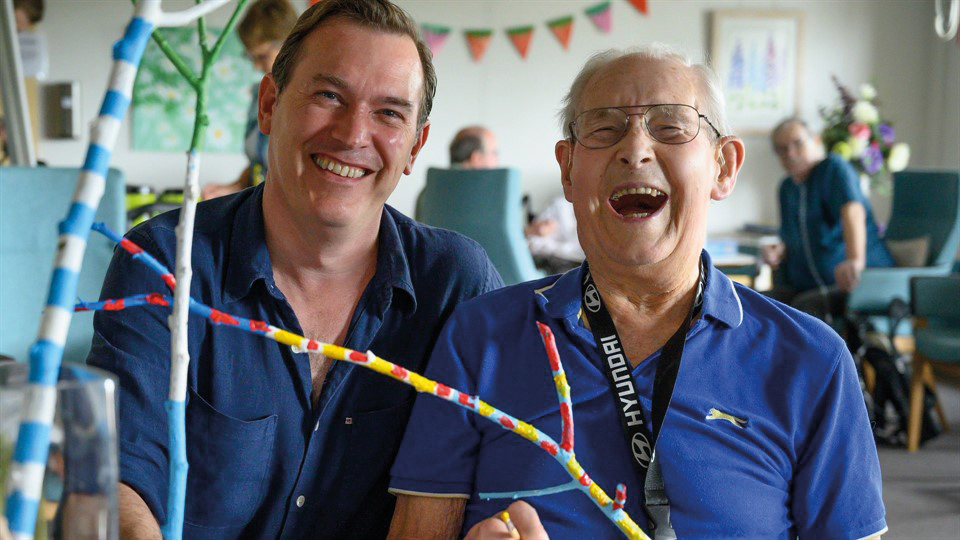
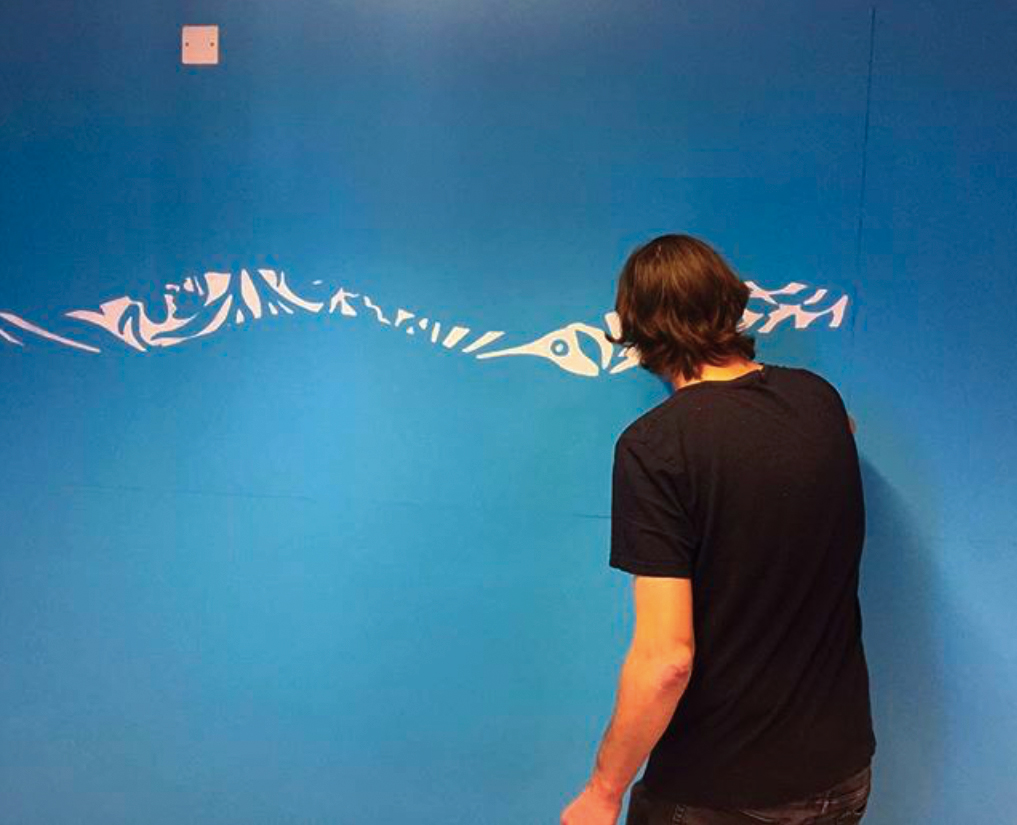
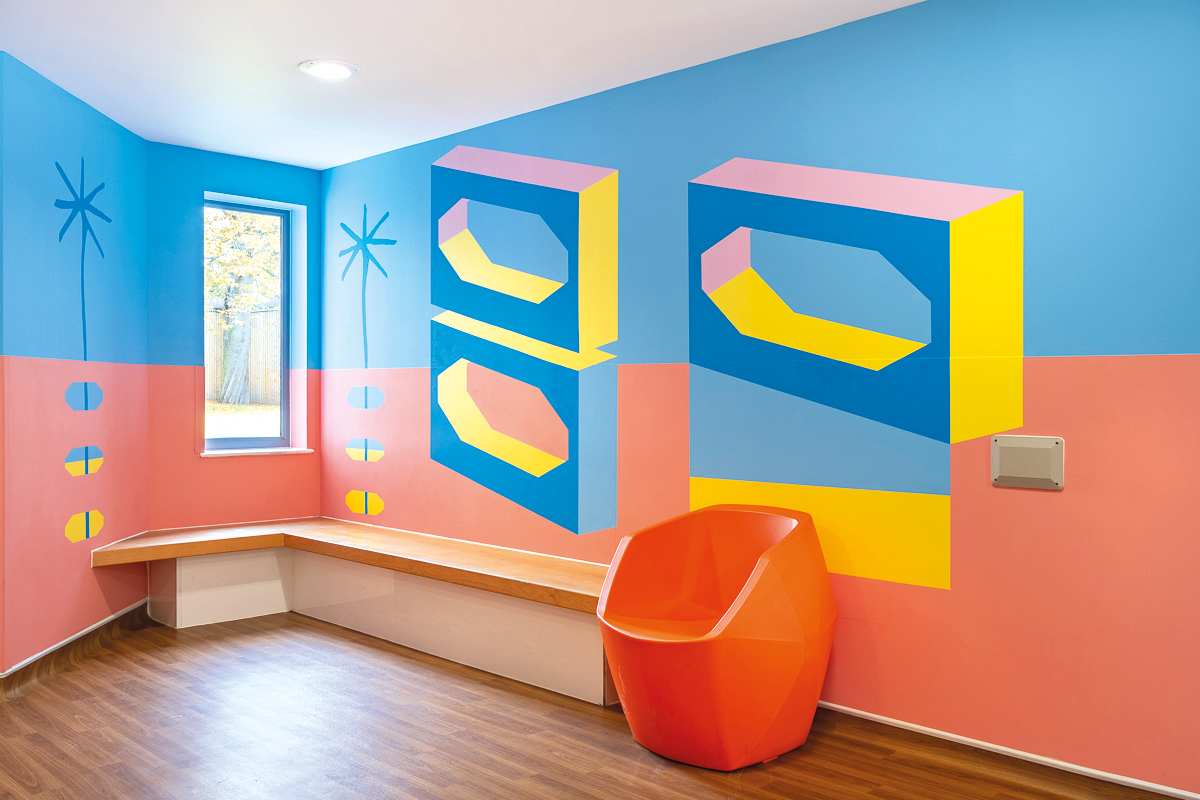
A TIME FOR REFLECTION
“Research evidence supporting the positive benefits of arts for people with dementia is growing.
“Some of the benefits include increased attentiveness, promotion of meaningful conversation, improvements in mood, and enhanced verbal fluency.”
And she called for a three-pronged approach in the future.
This would involve every care home appointing an artist-in-residence to work alongside nurses doctors and carers; and every GP surgery displaying quality artwork in public spaces.
Finally, she wants every hospital across the country to have artwork on its walls that is chosen by patients and staff to provide aesthetic pleasure, stimulate meaningful conversation, to distract from pain and anxiety, and to soothe and reflect upon.
